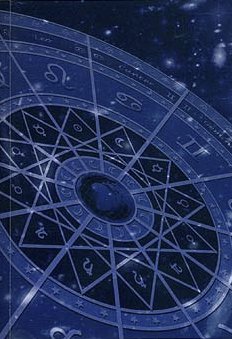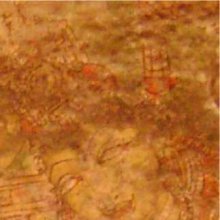Shroni, Śroṇī: 18 definitions
Introduction:
Shroni means something in Hinduism, Sanskrit, Marathi, Hindi. If you want to know the exact meaning, history, etymology or English translation of this term then check out the descriptions on this page. Add your comment or reference to a book if you want to contribute to this summary article.
The Sanskrit term Śroṇī can be transliterated into English as Sroni or Shroni, using the IAST transliteration scheme (?).
Images (photo gallery)
In Hinduism
Purana and Itihasa (epic history)
Source: archive.org: Shiva Purana - English TranslationŚroṇī (श्रोणी) refers to the “hips”, according to the Śivapurāṇa 2.3.12.—Accordingly, as Śiva said to Himācala (i.e., Himālaya): “This auspicious slender-bodied maiden of comely hips [i.e., su-śroṇī] and moon-like face should not be brought near me. I forbid you again and again. A woman is a phase of illusion. As the scholars who have mastered the Vedas say particularly, a young damsel is a hindrance to ascetics. O mountain, I am an ascetic, a yogin, never affected by illusion. Of what avail is a woman thrust on me? [...]”.
Source: Cologne Digital Sanskrit Dictionaries: The Purana IndexŚroṇī (श्रोणी).—A river of the Bhāratavarṣa.*
- * Vāyu-purāṇa 45. 100.

The Purana (पुराण, purāṇas) refers to Sanskrit literature preserving ancient India’s vast cultural history, including historical legends, religious ceremonies, various arts and sciences. The eighteen mahapuranas total over 400,000 shlokas (metrical couplets) and date to at least several centuries BCE.
Jyotisha (astronomy and astrology)
Source: Wikibooks (hi): Sanskrit Technical TermsŚroṇi (श्रोणि).—A lower vertex of a quadrilateral or triangle. Note: Śroṇi is a Sanskrit technical term used in ancient Indian sciences such as Astronomy, Mathematics and Geometry.

Jyotisha (ज्योतिष, jyotiṣa or jyotish) refers to ‘astronomy’ or “Vedic astrology” and represents the fifth of the six Vedangas (additional sciences to be studied along with the Vedas). Jyotisha concerns itself with the study and prediction of the movements of celestial bodies, in order to calculate the auspicious time for rituals and ceremonies.
Ayurveda (science of life)
Source: archive.org: Vagbhata’s Ashtanga Hridaya Samhita (first 5 chapters)Śroṇī (श्रोणी) refers to the “buttocks”, which is mentioned in verse 3.15 of the Aṣṭāṅgahṛdayasaṃhitā (Sūtrasthāna) by Vāgbhaṭa.—Accordingly, “[...] Passionate (and) lovely women with exuberant thighs, breasts, and buttocks [viz., pīvara-śroṇī] take away the cold, their body being hot with incense, saffron, and youth. [...]”.
Note: The possessive compound pīvara-ūru-stana-śroṇī—“with exuberant thighs, breasts, and buttocks” has been resolved as usual by means of modal accusatives: nu-ma brla daṅ ro-smad rgyas—“exuberant in breasts, thighs, and buttocks [lit., lower parts]”, with ūru and stana transposed.
Source: gurumukhi.ru: Ayurveda glossary of termsŚroṇi (श्रोणि):—Pelvis; Hips and Loins

Āyurveda (आयुर्वेद, ayurveda) is a branch of Indian science dealing with medicine, herbalism, taxology, anatomy, surgery, alchemy and related topics. Traditional practice of Āyurveda in ancient India dates back to at least the first millenium BC. Literature is commonly written in Sanskrit using various poetic metres.
Shilpashastra (iconography)
Source: Shodhganga: Vaisnava Agamas And Visnu ImagesŚroṇī (श्रोणी) refers to “ornaments for the loins”, as defined in treatises such as the Pāñcarātra, Pādmasaṃhitā and Vaikhānasa-āgamas, extensively dealing with the technical features of temple art, iconography and architecture in Vaishnavism.—Bharata (cf. Nāṭyaśāstra 23.35-37) mentions the ornaments for the loins (śroṇī) viz. kāñcī (girdle) with strings of pearls, talaka (waist band), mekhalā (waist belt), raśanā (girdle) and kalāpa (sash); as far as the number of strings are concerned, kāñcī with one string, mekhalā with eight strings, raśanā with sixteen strings and kalāpa with twenty-five strings. Loin ornaments of celestial damsels and royal ladies consist of thirty-two, forty-eight and hundred and eight strings of pearls.

Shilpashastra (शिल्पशास्त्र, śilpaśāstra) represents the ancient Indian science (shastra) of creative arts (shilpa) such as sculpture, iconography and painting. Closely related to Vastushastra (architecture), they often share the same literature.
Languages of India and abroad
Marathi-English dictionary
Source: DDSA: The Molesworth Marathi and English Dictionaryśrōṇi (श्रोणि) [or श्रोणी, śrōṇī].—f S The hip and loins.
Source: DDSA: The Aryabhusan school dictionary, Marathi-Englishśrōṇī (श्रोणी) [-ṇi, -णि].—f The hip and loins.
Marathi is an Indo-European language having over 70 million native speakers people in (predominantly) Maharashtra India. Marathi, like many other Indo-Aryan languages, evolved from early forms of Prakrit, which itself is a subset of Sanskrit, one of the most ancient languages of the world.
Sanskrit dictionary
Source: DDSA: The practical Sanskrit-English dictionaryŚroṇi (श्रोणि) or Śroṇī (श्रोणी).—f. [śroṇ-in vā ṅīp Un.4.53]
1) The hip or loins, the buttocks; श्रोणीभारादलसगमना (śroṇībhārādalasagamanā) Meghadūta 84; श्रोणी- भारस्त्यजति तनुताम् (śroṇī- bhārastyajati tanutām) K. P.1; Śiśupālavadha 8.31.
2) A road, way.
Derivable forms: śroṇiḥ (श्रोणिः).
Source: Cologne Digital Sanskrit Dictionaries: Shabda-Sagara Sanskrit-English DictionaryŚroṇi (श्रोणि).—f. (-ṇiḥ or ṇī) 1. The hip and loins. 2. A road, a way. E. śroṇ to heap, aff. in; or śru to hear, Unadi aff. ni .
Source: Cologne Digital Sanskrit Dictionaries: Benfey Sanskrit-English DictionaryŚroṇi (श्रोणि).—m., f., and nī, f. 1. The hips and loins, buttocks, [Vikramorvaśī, (ed. Bollensen.)] [distich] 100 (ṇi); [Meghadūta, (ed. Gildemeister.)] 80 (ṇī). 2. A road, a way.
Source: Cologne Digital Sanskrit Dictionaries: Cappeller Sanskrit-English DictionaryŚroṇi (श्रोणि).—[feminine] (adj. —° [feminine] ī) buttock, hip (poss. śroṇimant).
--- OR ---
Śroṇī (श्रोणी).—[feminine] (adj. —° [feminine] ī) buttock, hip (poss. śroṇimant).
Source: Cologne Digital Sanskrit Dictionaries: Monier-Williams Sanskrit-English Dictionary1) Śroṇi (श्रोणि):—[from śroṇa] f. ([cf. Lexicographers, esp. such as amarasiṃha, halāyudha, hemacandra, etc.] also m.; mostly [dual number]; ifc. f(ī). for śroṇī- See below) the hip and loins, buttocks, [Ṛg-veda] etc. etc.
2) [v.s. ...] the thighs or sides of the Vedi or of any square, [Baudhāyana-dharma-śāstra; Śulba-sūtra]; a road, way, [cf. Lexicographers, esp. such as amarasiṃha, halāyudha, hemacandra, etc.]
3) [v.s. ...] cf. [Latin] clunis; [Lithuanian] szlaunís.
4) Śroṇī (श्रोणी):—[from śroṇa] f. the hips and loins etc. (= śroṇi)
5) [v.s. ...] the middle, [Dharmaśarmābhyudaya]
6) [v.s. ...] Name of a river, [Viṣṇu-purāṇa]
Source: Cologne Digital Sanskrit Dictionaries: Yates Sanskrit-English DictionaryŚroṇi (श्रोणि):—[(ṇiḥ-ṇī)] 2. 3. f. The hip and loins; a road, way.
Source: DDSA: Paia-sadda-mahannavo; a comprehensive Prakrit Hindi dictionary (S)Śroṇī (श्रोणी) in the Sanskrit language is related to the Prakrit word: Soṇī.
[Sanskrit to German]
Sanskrit, also spelled संस्कृतम् (saṃskṛtam), is an ancient language of India commonly seen as the grandmother of the Indo-European language family (even English!). Closely allied with Prakrit and Pali, Sanskrit is more exhaustive in both grammar and terms and has the most extensive collection of literature in the world, greatly surpassing its sister-languages Greek and Latin.
Hindi dictionary
Source: DDSA: A practical Hindi-English dictionaryŚroṇi (श्रोणि):—(nf) the waist; hip, buttocks; ~[deśa] the region of hips.
...
Kannada-English dictionary
Source: Alar: Kannada-English corpusŚrōṇi (ಶ್ರೋಣಿ):—
1) [noun] = ಶ್ರೋಣ [shrona]2.
2) [noun] the hip and loins; the buttocks.
3) [noun] a path, way, road.
Kannada is a Dravidian language (as opposed to the Indo-European language family) mainly spoken in the southwestern region of India.
See also (Relevant definitions)
Starts with: Shroni-bandha, Shronibhandika, Shronibhara, Shronibimba, Shronidesha, Shronika, Shronikapala, Shronikataha, Shronimat, Shroniphala, Shroniphalaka, Shronipratodin, Shronisutra, Shronita, Shronitas, Shronitata, Shronivarjam, Shronivedha, Shronivimba, Shroniyugma.
Ends with: Agnishroni, Dakshinashroni, Mahakatitatashroni, Pippalishroni, Prithushroni, Shrutashroni, Strishroni, Sushroni, Vedishroni, Vipulashroni.
Full-text (+39): Shronisutra, Shroniphalaka, Shroniphala, Sushroni, Shronivimba, Prithushroni, Pratodin, Shronitas, Shronitata, Shronibimba, Soni, Shroni-bandha, Vedishroni, Rasana, Kalapa, Shronimat, Shronikapala, Kanci, Shronidesha, Shronibhara.
Relevant text
Search found 16 books and stories containing Shroni, Śroṇī, Sroni, Śrōṇi, Śroṇi, Śrōṇī; (plurals include: Shronis, Śroṇīs, Sronis, Śrōṇis, Śroṇis, Śrōṇīs). You can also click to the full overview containing English textual excerpts. Below are direct links for the most relevant articles:
The Agnistoma Somayaga in the Shukla Yajurveda (by Madan Haloi)
Part 4.12: Collection of Vasatīvarī water < [Chapter 4 - The Agniṣṭoma Ritual]
Part 3.1: Construction of the Mahāvedī < [Chapter 4 - The Agniṣṭoma Ritual]
Part 4.11: Animal sacrifice in honour of Agni and Soma < [Chapter 4 - The Agniṣṭoma Ritual]
Sahitya-kaumudi by Baladeva Vidyabhushana (by Gaurapada Dāsa)
Bhakti-rasamrta-sindhu (by Śrīla Rūpa Gosvāmī)
Verse 2.1.46 < [Part 1 - Ecstatic Excitants (vibhāva)]
Rig Veda (translation and commentary) (by H. H. Wilson)
Rig Veda 10.163.4 < [Sukta 163]
A History of Indian Philosophy Volume 2 (by Surendranath Dasgupta)
Part 2 - Bones in the Atharva-veda and Āyurveda < [Chapter XIII - Speculations in the Medical Schools]
Part 8 - Vāyu, Pitta and Kapha < [Chapter XIII - Speculations in the Medical Schools]
